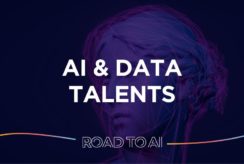Innovative and disruptive, digital applications are performance drivers because they allow users to perform better, more quickly, and more simply. Digital is streamlining the organization of work by establishing a fast, uniform sequence of processes and making a large volume of analytical data available immediately and simultaneously.
Is a digital HR strategy necessary? If so, how is its ROI measured?
A preliminary quantitative analysis can identify simple criteria for improving HR performance and management costs:
- Automation of time-consuming activities (administrative management in particular),
- Generation of economies of scale related to going paperless,
- Reduction of structural, sourcing, recruiting, and communication costs by re-insourcing skills,
- Ease of deployment and implementation (less than one year of deployment compared with a 2 to 5-year undertaking for an ERP-type solution).
However, the adoption of digital technologies increases the costs of transformation and training the employees on these tools through:
- Development of new IT infrastructures and performance of network securing actions,
- Design of a global change management system, including the plan to ramp up the skills of those involved,
- Actions to adapt to laws and regulations.
More than ROI, companies should look at the “return on targeted objectives”, as each company is in charge of defining the performance expected from deploying its digital strategy. This is a longer-term, qualitative view of ROI, which has the goal of optimizing HR processes in their entirety. This involves refocusing the involvement of the HR function in “core business” activities in order to focus energies on areas of expertise and increase the scopes of managed people. It also includes the decompartmentalization of processes thanks to the interconnection of HR information systems in integrated mode. HR development, training, and skills are managed from a single, collaborative platform The simplification of HR information system planning allows for better data traceability and more sharing of information. Digital also permits a redistribution of tasks between the employee, the manager, and HR for better flow and time savings. Collaborative tools aim to improve the sharing of knowledge internally and feed into the collective intelligence. Lastly, Big Data tools are intended to optimize HR decision-making and permit high-quality management of HR data.
With this in mind, two key points will need to be carefully considered by HR departments:
- First of all, support for HR teams in these changes: the evolution of their own core business and the transformation of the relationship that they have with employees;
- Also, the reconciliation of this economic and organizational performance with the company’s social reality. The autonomy enjoyed by employees, particularly through mobile uses, weakens the link between the HR function and its people. It is therefore essential to make sure that the integration of digital is synonymous with a positive transformation of working methods, while promoting the creation of social cohesion.



